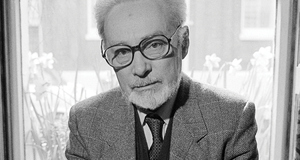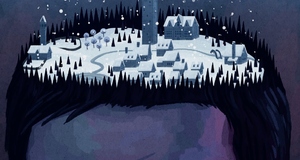The Ugly Truth: An Exploration of Postwar Representations of the Holocaust Through The Obscene
By
2010, Vol. 2 No. 01 | pg. 1/2 | »
KEYWORDS:
Omer Bartov’s essay from Intellectuals on Auschwitz expresses the author’s dismay with the postwar and postmodern representations of, and discourses on, the Holocaust. He breaks down larger concepts on memory and history into five segments. In his fourth segment, “Representation And Its Discontents,” Bartov questions humanity’s ability to accurately represent the horrors of the Holocaust. In the segment, Bartov also condemns the somewhat stimulating aspects of studying the event—the representation and memorializing of the Holocaust through an emphasis on the inhumanity and perversity of the event. Despite Bartov’s personal condemnation and his evidence for support, his language and perspective seems too extreme in this particular instance, as such representation may not be especially helpful but nevertheless truthful and not nearly as dangerous as he would have the reader believe. It is safe to presume Bartov’s segment title is a clever throwback to Sigmund Freud’s famous work Civilization and Its Discontents, but it nonetheless serves as a fitting introduction to his subsequent analysis. Bartov writes of the intellectual post-war struggle to see whether or not one can even represent the Holocaust. It is undoubtedly a huge challenge for a variety of reasons Bartov explores throughout his entire essay, and this challenge therefore inspires a great deal of discontent from intellectuals and survivors alike (though no one should realistically equate their perspectives).The main “discontents” Bartov utilizes in his text are Jean Améry, Primo Levi, and Paul Celan, survivors who attempted to write of their experiences but were eventually driven to suicide. What is most fascinating, and perhaps most disturbing, about Bartov’s three examples are their personal dissatisfaction with the post-Shoa representations by intellectuals and artists, as well as politicians, and in fact, the post-Shoa world itself. Bartov writes that survivors such as these learned that Auschwitz was not “the horror to end all horrors” but rather “merely the beginning of a new age,” which would consist of similar horrors at an even faster pace (Bartov 301). The saying “history repeats itself”—which Bartov questions in his piece—unfortunately fits finely here as World War I was historically known as “The War to End All Wars,” while countless World War II veterans considered that war to be the last one as well. Of course, the United States is currently in the midst of two wars in the Middle East, and a genocide like that in Darfur is as brutal and incomprehensible as most. This—Auschwitz’s failure as a finalé for horror and history’s even worse repetition of atrocity and warfare—connects to Bartov’s overriding message in his essay that there is a great deal to be disappointed with in the modern, postwar world (it should be noted for contextual and time purposes that the essay is taken from Bartov’s book [Murder in Our Midst: The Holocaust, Industrial Killing, and Representation] published in 1996). Bartov opened the segment by raising the question of to “what extent [various] representations constitute an abuse of the historical truth and memory of the event” (301). Even though the writers reportedly criticized their own work, Bartov asserts that Levi and Améry actually, through their work, “do show that some sort of representation of the Holocaust is possible” (303). Simultaneously, Bartov discusses Levi’s accusation that the aforementioned methodological efforts to teach the Holocaust through the “intellectual stimulating zone of crime and sexual perversion” is in fact an “abuse of the experience” (303). Though it is hard to challenge a Holocaust survivor’s take on a social discourse on the subject, the word choice of “abuse” is difficult to grapple with. Much of the discontent from Bartov, and evidently Levi, with regards to Holocaust representation lies at the works that exploit the somewhat aesthetic evils of the events. The argument that this form of education’s focus is abuse of the memory of the Holocaust is a better argument than it being an abuse of the historical truth; indeed much of the brutality a survivor writes of, or Nazi footage captures, was the unfortunately ugly truth of one of the ugliest periods known to mankind. This distinction between memory and historical truth is a necessary one Bartov made but later abandoned to make his point. He cites films such as 1969’s The Damned to 1975’s The 120 Days of Sodom to 1981’s Lili Marlene (showing their ability to attract an audience through successive decades) and accuses them of “exploit[ing] our own mean instincts and then seek to blame us for them” (303). The harsh language Bartov uses to express his vision (“They shame and morally disarm us”) seems extreme in an essay disparaging extremity, and furthermore are very subjective claims (303). One may view a brutal rape scene and not “like viewing” it as Bartov claims, nor are they being “complacent” with regards to extremity (303). A violent depiction of inhumanity in a film like Seven Beauties from 1976 may invoke extreme disgust, as Bartov claims, but may subsequently educate a viewer on the atrocities and invite thoughts on ethical and moral issues relating to the Holocaust and now, humanity itself. This so-called fascination with the brutalities and perversions of the Holocaust, according to Bartov, result in a “detached, amoral, nonjudgmental” standpoint for the learner (303). However, a successful work of art—particularly film—should evoke emotion and invoke a reaction to the drama onscreen. As someone who has not seen the aforementioned films it is obviously hard to critique them on both levels of content and form. Still, even the most brutal film should contain characters that are empathetic to the viewer—especially when that character is a Holocaust victim. Works like these, the very ones Bartov critiques, have the potential to invite a new beneficial outlook from observers or even activism. At the least, it reveals aspects of very brutal reality relating to what Bartov correctly calls the “worst epoch in contemporary history” (303). Furthermore, Bartov’s earlier claim that “This was disturbing: an obsession with fascism and all its attributes whose psychological and intellectual motivations bore an uncanny resemblance to those that had accompanied the phenomenon itself” appears, for lack of a better word, a bit extreme (291-292). There is a distinction between those who seek to learn the gross details of a genocide and than an SS officer who might march Jews into a line in a Polish ghetto and “by a flick of his finger, indicate…who was to live, who was to die” (Dawidowicz 283). However, Bartov nevertheless reasserts this claim as he argues that such films by Bernardo Bertolluci or Hans Jurgen Syberberg turn the viewer into “accomplices to evil, at least as bystanders once removed” (303). Again, it is vital to reiterate that simply viewing a Holocaust horror film does not make one an accomplice to the evils depicted onscreen, nor is minimizing the harsh claim to simply “bystanders once removed” sufficient enough in terms of truth; the audience-artwork relationship and dynamic is not merely “once removed” from the reality of the tragedy, and it is surprising that a survivor such as Levi might concur with Bartov’s thesis. Moreover, it is debatable as to whether or not this so-called “obsession” or fascination is really related to peoples’ “morbid curiosity” in extreme fascism at all (303). What is more likely is this fascination reveals a natural human interest in seemingly unnatural human capabilities. The claim that this is “highly dangerous” has minimal merits aside from the author’s own personal, and, to his credit, legitimate anxiety. Still, unfortunately, these criminal acts are not only imaginable in the minds of a fully developed individual, but they have been executed practically before by fully developed individuals from Auschwitz to Armenia to Rwanda. What is particularly disturbing and befuddling about the events is the fact that the individuals responsible for the heinous acts were often average German citizens. Christopher R. Browning’s titling of his book Ordinary Men about the Reserve Police Battalion in Poland is a perfect example of this frightening fact, as it unloads a great deal of ethical and psychological (and perhaps unanswerable) questions. Most of the Einsattzgruppen were professional men with degrees—from opera singers to church officials—and the 3,500 to 4,000 men who took part in the mass murdering of Jews on the streets of Russia were volunteers as opposed to forced slaves of the Third Reich. Now to simply reveal, with historical accuracy, the disgusting nature of these events does not increase the danger of history repeating itself; to assert so is to give little credit to the average human being. Indeed, this “highly stylized form of these phenomena” is both stimulating and interesting as Bartov explains with concerned language (292). It is arguable, however, whether this must be a cause for concern, or disturbance in Bartov’s case. In fact, such depictions that appeal to the worst in human beings can better explain the events and moreover serve less as an abuse of memory and more as an haunting reminder.Continued on Next Page » Suggested Reading from Inquiries Journal
Inquiries Journal provides undergraduate and graduate students around the world a platform for the wide dissemination of academic work over a range of core disciplines. Representing the work of students from hundreds of institutions around the globe, Inquiries Journal's large database of academic articles is completely free. Learn more | Blog | Submit Latest in History |
















